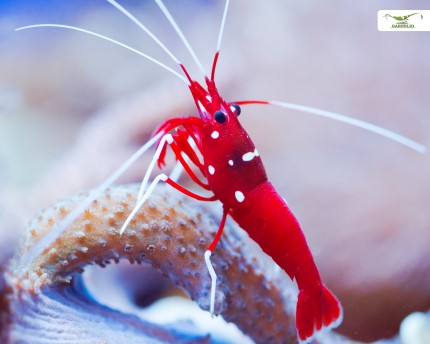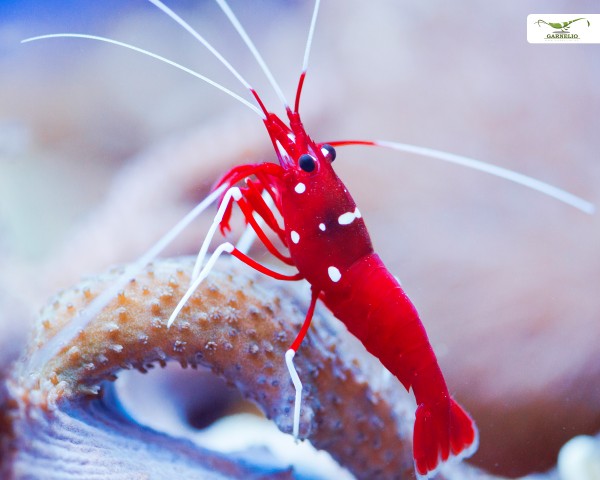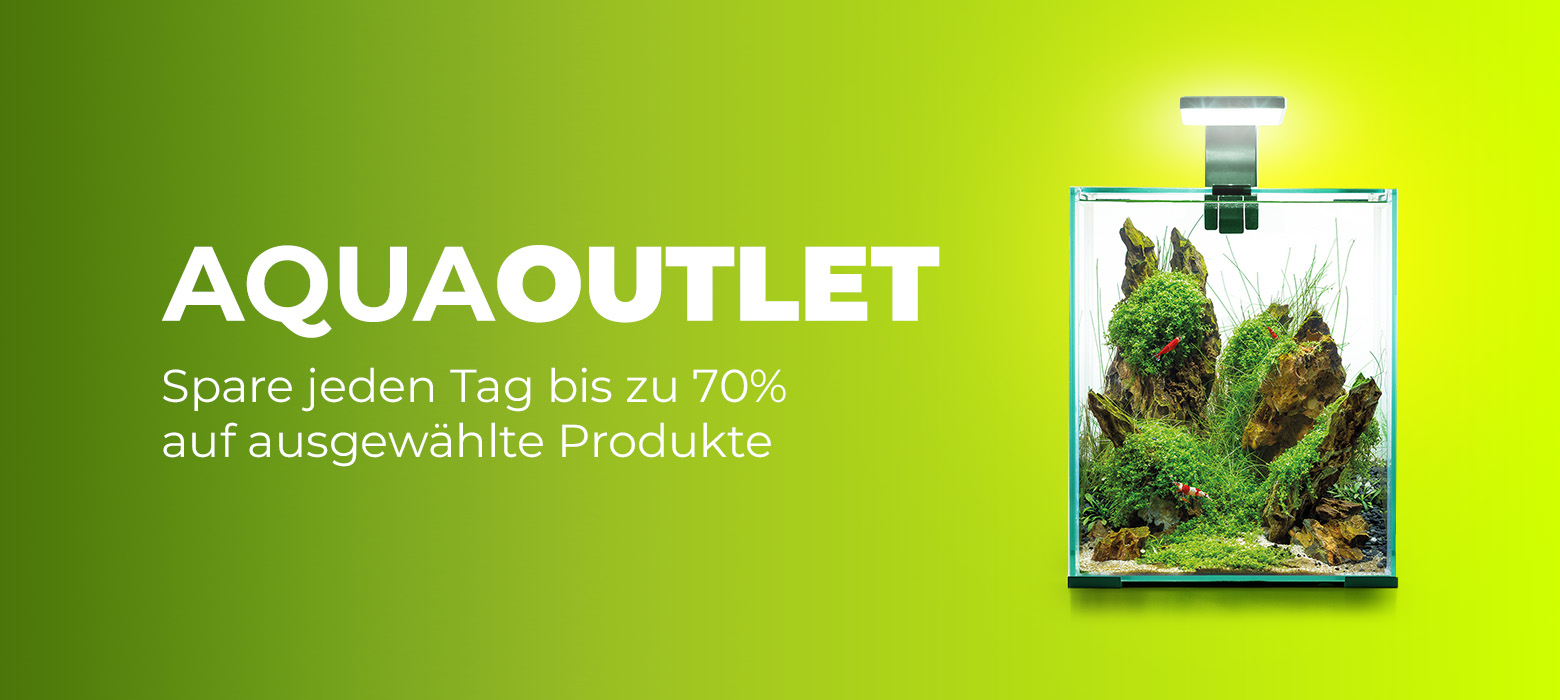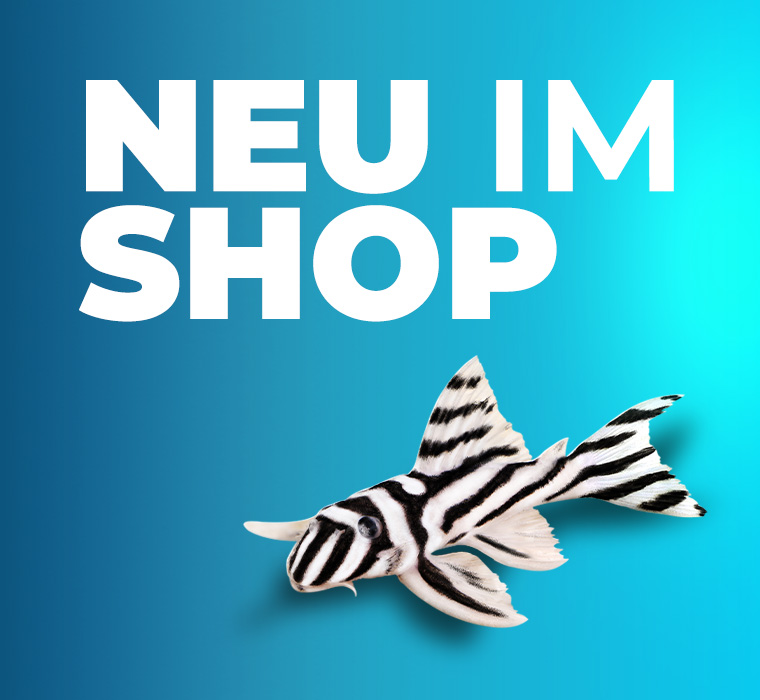- Item no: 27220
Fast delivery times
All products are in stock with us!14 years of breeding experience
Let our team of experts advise you!High customer satisfaction
from over 3,000 reviews "Already externally, the very noble-looking cardinal shrimp, Lysmata debelius, can be recognized from afar in the marine aquarium. Cardinal shrimp also come from the genus Lysmata within the family of cleaner shr imp and marble shrimp. Similar to its relative, the white-banded cleaner shrimp, it rids fish of skin impurities, but not quite as ambitiously. It too originates from the Indo-Pacific, with its range extending from French Polynesia through the Maldives to the Central Pacific. Also known as the fire shrimp, this impressive invertebrate lives at depths of up to 30 meters, where it primarily inhabits reef crevices and hiding places and tends to keep a somewhat low profile. Once accustomed to its new home, the cardinal shrimp can also be well cared for by marine newbies and quite soon takes up its cleaning activity, in which it not only cares for fish, but also tirelessly examines the aquarium for edibles.
By the way, by name the cardinal shrimp appears twice in aquaristics! The cardinal shrimp living in fresh water has the scientific species name Caridina dennerli and has only purely externally a few similarities with Lysmata debelius, but they are not related.
With its fiery red shining body the cardinal shrimp really glows. There are several white spots on their body armor. Also the leg segments near the body, as well as the pairs of claws are red, the outer ones snow-white, as well as the long pairs of antennae. Cardinal shrimp reach a size of about 5 cm without antennae.
Like all Lysmata species, cardinal shrimp are hermaphroditic. As a juvenile shrimp they first develop male sexual characteristics, later also female. However, they cannot mate themselves, but need a partner. The breeding of the cardinal shrimp is possible in the species aquarium and is rather difficult in the community tank. They belong to the primitive reproduction type and develop a lot of small very small eggs, which they carry under their swimming legs. Due to their intense body color they can only be recognized by looking very closely. The larvae go through several stages of development, in which they molt several times, before they are also visually recognized "as shrimp". The rearing of these is somewhat more complex, but possible with very fine rearing food. Several factors determine the development process, so that no overpopulation is to be feared.
Already in small aquariums starting from 54 liters the cardinal shrimp can be optimally maintained, also in a large great community aquarium it enhances each reef! Like all marine invertebrates, it is very sensitive to fluctuations in density and must therefore be acclimated very carefully to its new home. Recommendable would be the droplet method with our Acclimatization set. Also in the aquarium it should have enough caves and hiding places to retreat to. Especially in the moulting phase she is very vulnerable as long as her new carapace is not yet hardened. Otherwise, without protection, it becomes a victim very easily. The stripped skin resembles a colorless shrimp copy and will eventually be eaten. For the hardening of the shell the cardinal depends on minerals , besides the regular water change also the water values, especially the calcium content in the water should be controlled regularly. With a well sorted Test set for seawater this can be done comfortably and quickly. With its long claws and walking legs the cardinal shrimp also collects food remains and coatings from the reef and thus keeps it clean. The cardinal shrimp tolerates these water values quite well: salinity: 35 g/l, density: 1.023, KH 7-9 °dKH, pH 7.8-8.3, calcium: 400-430 mg/l, magnesium: 1,250-1,350 mg/l, temperature 24-26 °C
Cardinals are peaceful and rather introverted invertebrates, which do not quarrel about food and also rather withdraw. They can be kept together with all fish and invertebrates, as long as they are not on their menu. They can be kept in groups without any problems and can also be socialized with other invertebrates. Like all invertebrates they react lethally to copper, which must be taken into account in case of possible medicinal applications in the aquarium!
As omnivores, cardinal shrimp can be fed optimally. They feed both on the feed granules of the fish, but also on their feed flakes. Apart from that, they can also be fed with shrimp food for marine invertebrates or bottom tablets. Even large live and Frozen food such as copepods, krill, saltwater fleas and Artemia, but also Mysis it accepts gratefully. Beyond that it eats also gladly commercial Zooplankton.
Expert Tip: We recommend for fish keeping the NatureHolic 3 Phase Liquid. The care set offers the best all-round protection for your animals. It ensures optimal conditions for successful breeding and keeping.
Speciality: cleaner shrimp
| Scientific name: | Lysmata debelius |
| German Name: | Cardinal shrimp, cardinal shrimp, cardinal shrimp, fire shrimp, blood red fire shrimp |
| Difficulty level: | for beginners |
| Origin/Distribution: | Indo-Pacific, Central Pacific |
| Coloration: | red base color with white spots on the carapace |
| Age expectation | approx. 4 years |
| Water parameters: | Salinity: 35 g/l, density: 1.023, KH 7-9 °dKH, pH 7.8-8.3, calcium: 400-430 mg/l, magnesium: 1,250-1,350 mg/l, temperature 24-26 °C |
| Tank size: | 54 l and up |
| Food | Omnivorous |
| Breeding | difficult, but possible |
| Behavior | peaceful |
| Group size | at least 2 animals |
- Item no: 27220
Entdecke die Garnelio Welt!
Garnelio gehört zu den größten Onlineshops für wirbellose Aquarientiere weltweit.
Viele Artikel gibt es exklusiv nur bei uns im Shop.










